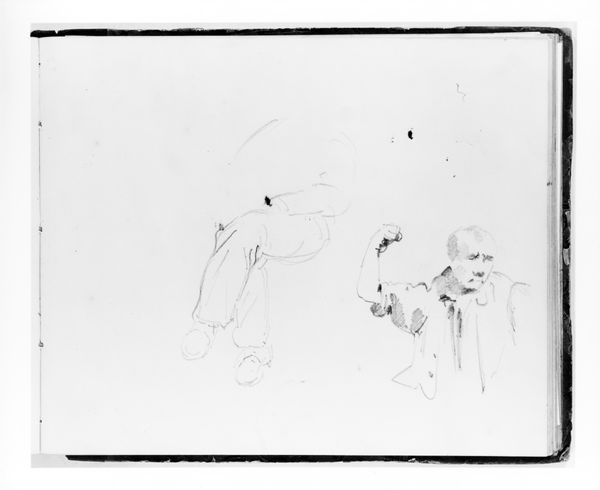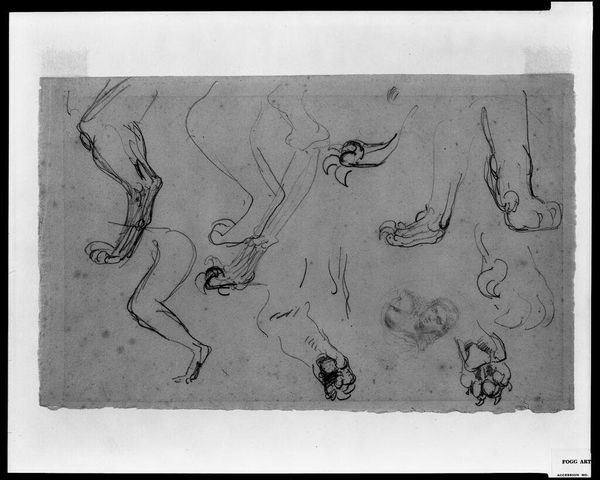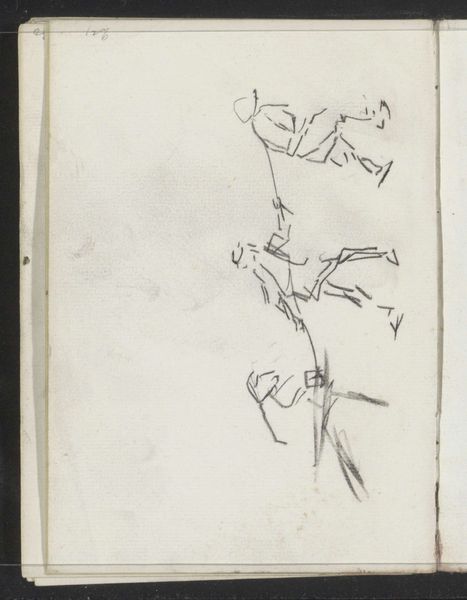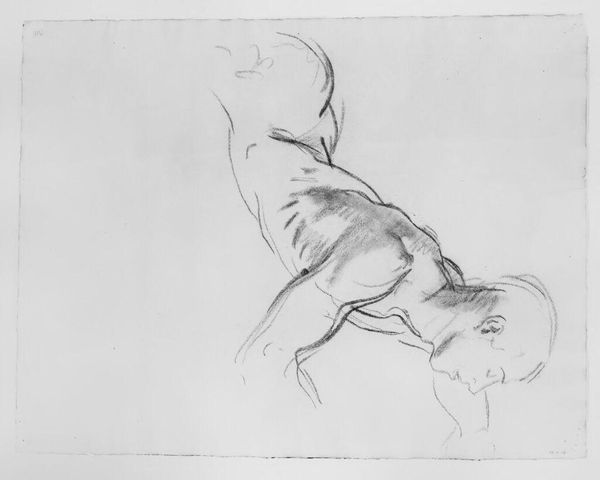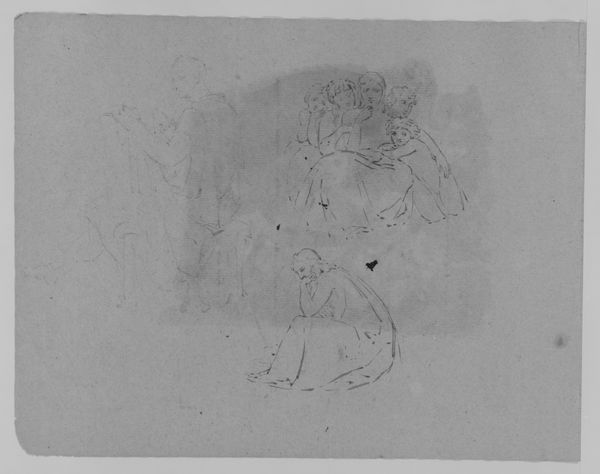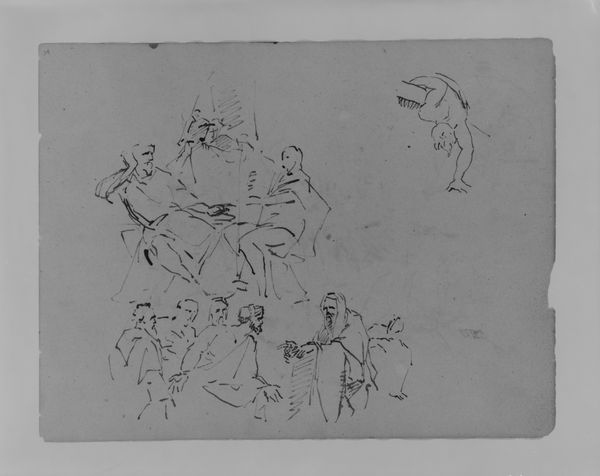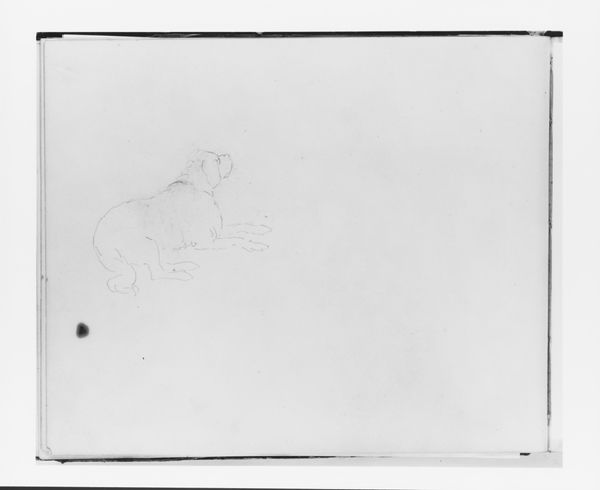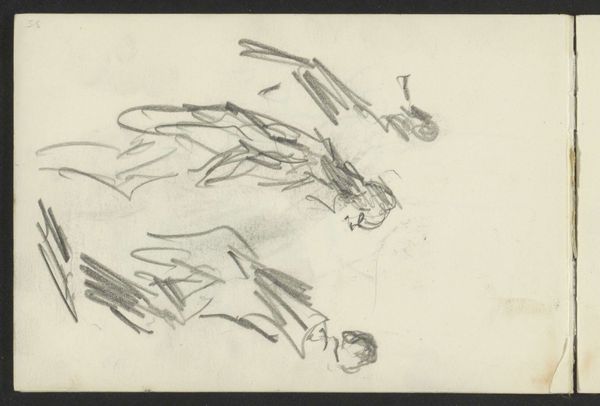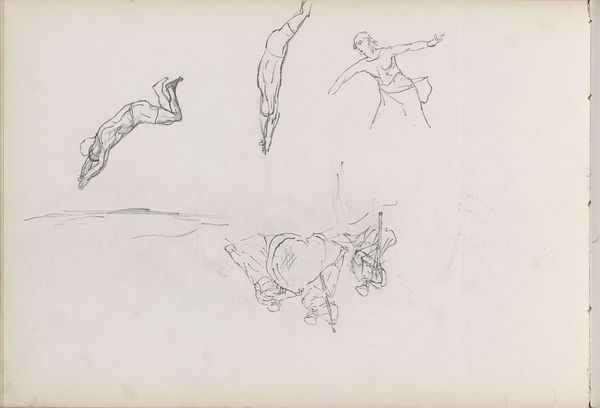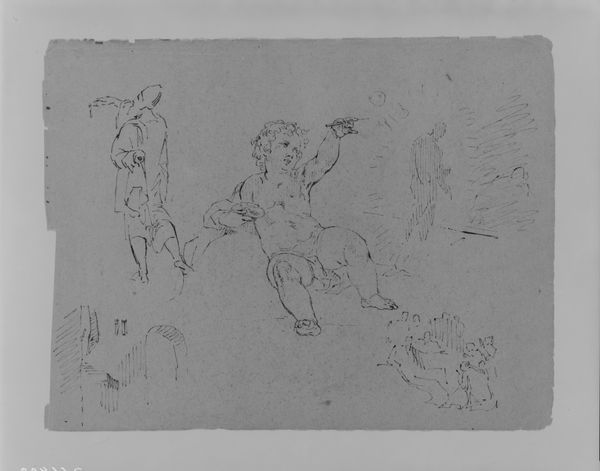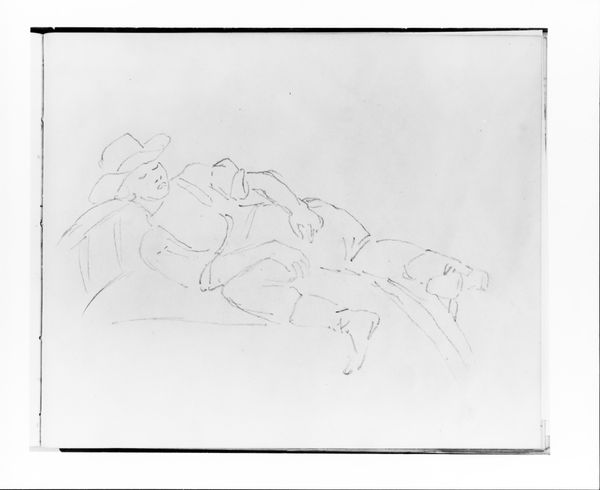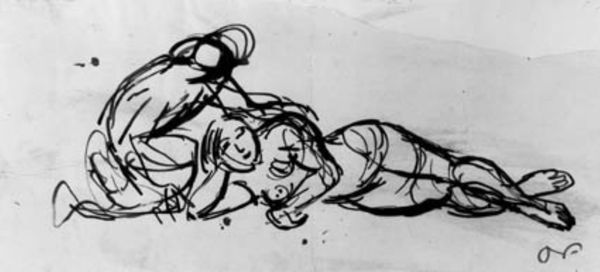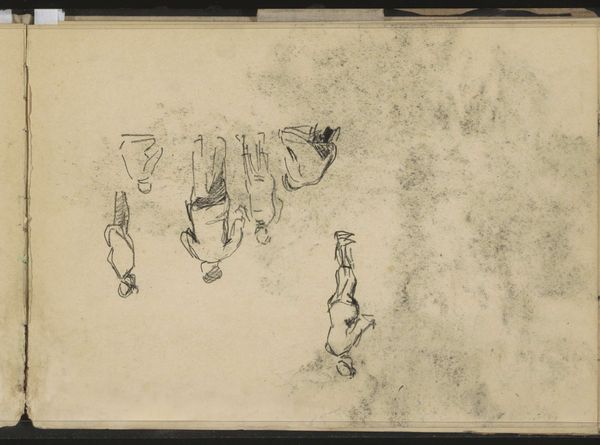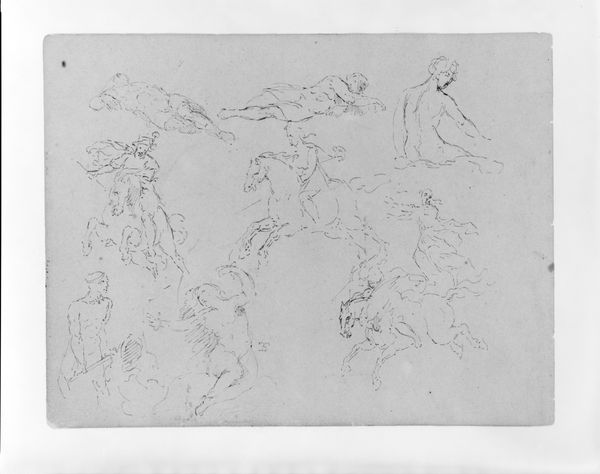
drawing
#
portrait
#
drawing
#
figuration
#
academic-art
Dimensions: 327 mm (height) x 260 mm (width) (bladmaal)
Editor: This drawing, "Otte studier af putti," created sometime between 1798 and 1863 by Eugène Delacroix, appears to be a study in pencil of cherubic figures. It almost feels like we're looking at preparatory sketches for a larger work, but what do you see in this seemingly informal composition? Curator: The historical placement of this work, mid-19th century, offers an interesting lens. Delacroix, working amidst the Romantic era's fascination with emotion and the revival of classical themes, engages with the putto, a figure deeply rooted in Western art history. Think of its journey – from symbolizing divine love in Renaissance art to decorative motifs in Neoclassicism. By this time, depictions of children served many purposes: evoking feelings of domesticity, and the family unit, or perhaps illustrating popular biblical passages. These figures weren't purely aesthetic choices; they spoke volumes about the shifting cultural values. What impact do you think the proliferation of images like these might have on their audience? Editor: It seems like repeated exposure might normalize or domesticate these mythological symbols, bringing the celestial down to earth. Curator: Precisely! And who is being excluded? By rendering these figures from a certain socio-economic perspective, it allows viewers to identify the popular style or taste. However, does the exclusion run the risk of promoting ideals that might overshadow individual perspectives? Consider that many were illiterate during this time, but pictures were available everywhere. Does this mean we can see these sketches as examples of cultural politics in imagery? Editor: That is an angle I had never thought of before. Thanks to that context, these 'putti' suddenly feel like they hold much more cultural weight than just charming sketches. Curator: I agree. Delacroix offers more than just a glimpse into his artistic process; his art can act as a mirror to broader societal trends, prompting critical conversations about values and representation.
Comments
No comments
Be the first to comment and join the conversation on the ultimate creative platform.
